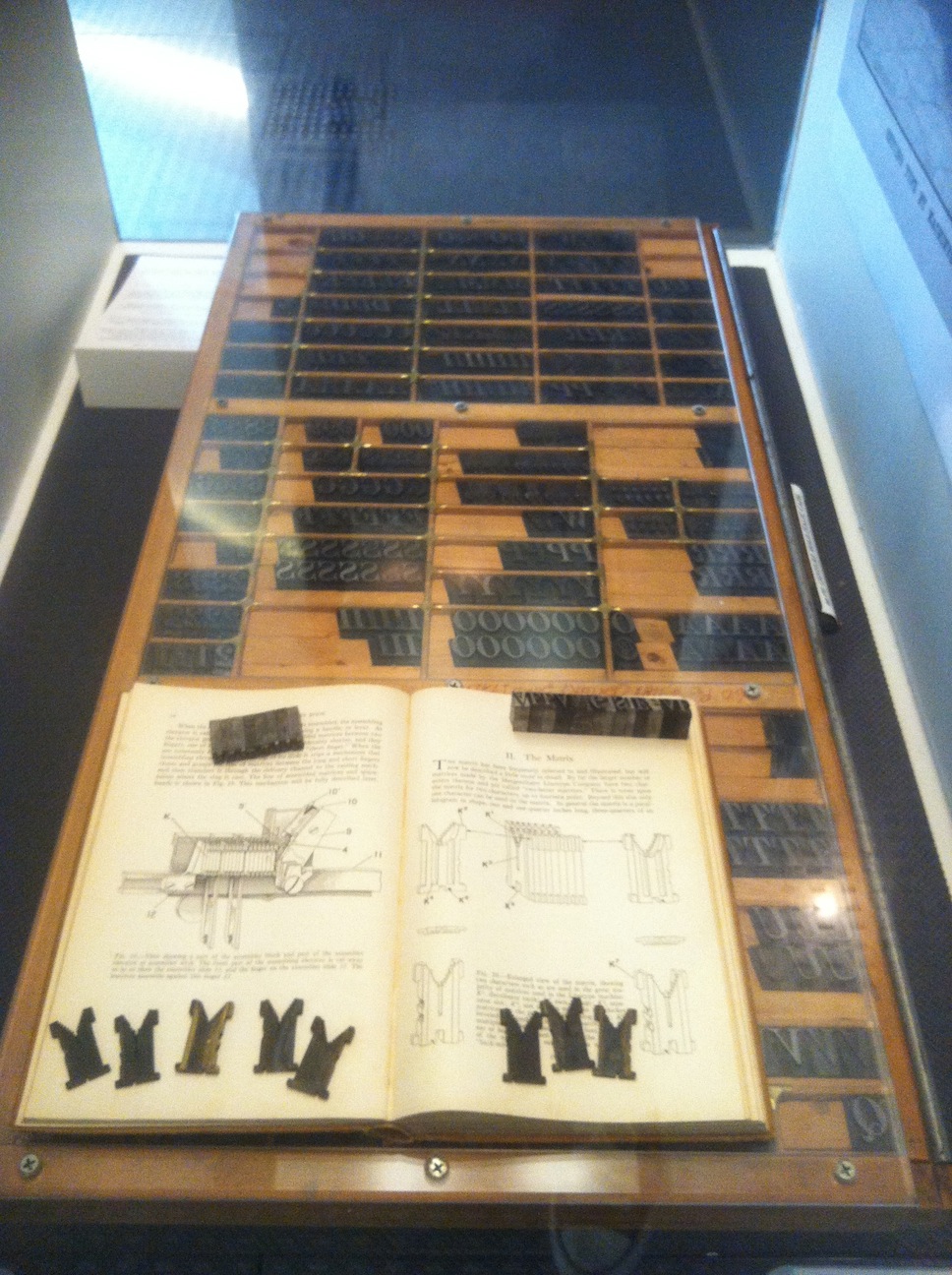The Skyscraper Museum is devoted to the study of high-rise building, past, present, and future. The Museum explores tall buildings as objects of design, products of technology, sites of construction, investments in real estate, and places of work and residence. This site will look better in a browser that supports web standards, but it is accessible to any browser or Internet device.
METAL

FONTS, LETTERPRESS, AND HOT METAL TYPE
From the invention of movable type in the 15th century, individual letters of typeface, or font, were used to compose words and sentences. Type was set by hand until the 1880s when the Linotype and other inventions mechanized typesetting. The new machines used a typewriter keyboard to drop letters, or matrices, into words and sentences in a column-width line, then cast that line of type in molten lead, creating a slug. Multiple lines were composed into columns and pages in a fraction of the time of the hand-composing method.
Letterpress is the term for printing with metal type or plates. From the 1840s rotary presses, which placed the bed of type or a cast printing plate on a cylinder, greatly speeded newspaper production. Over the decades to today, many technological advances have multiplied press capacities to hundreds of thousands of papers per hour.

PRINTER'S CASE: HEADLINE TYPE FOR HAND-SETTING
This printer's case, with its font of metal type, was used by New York Times to set front-page banner headlines on major news events, including presidential elections and the outbreak and ending of major wars. The typeface is 60-point Century Bold.
The type was manufactured by a foundry for hand-setting, and the characters were distributed back into the case after each front page was molded for plate-making. Because momentous news breaks occur infrequently, it is likely that these actual characters were durable enough for use throughout World War II and afterward, until 1978, when the conversion to computer typesetting was complete.
On loan from the collection of Allan Siegal, former assistant managing editor of The New York Times.
SEMI-CYLINDRICAL PRINTING PLATE
The issue of Monday, June 19, 1978, was one of the last printed by the old rotary letterpress method. The paper of July 3, 1978, was the first produced entirely by phototypesetting and a modified form of offset printing. This plate is the bottom half of the original cylinder.
Courtesy of The New York Times Company.
